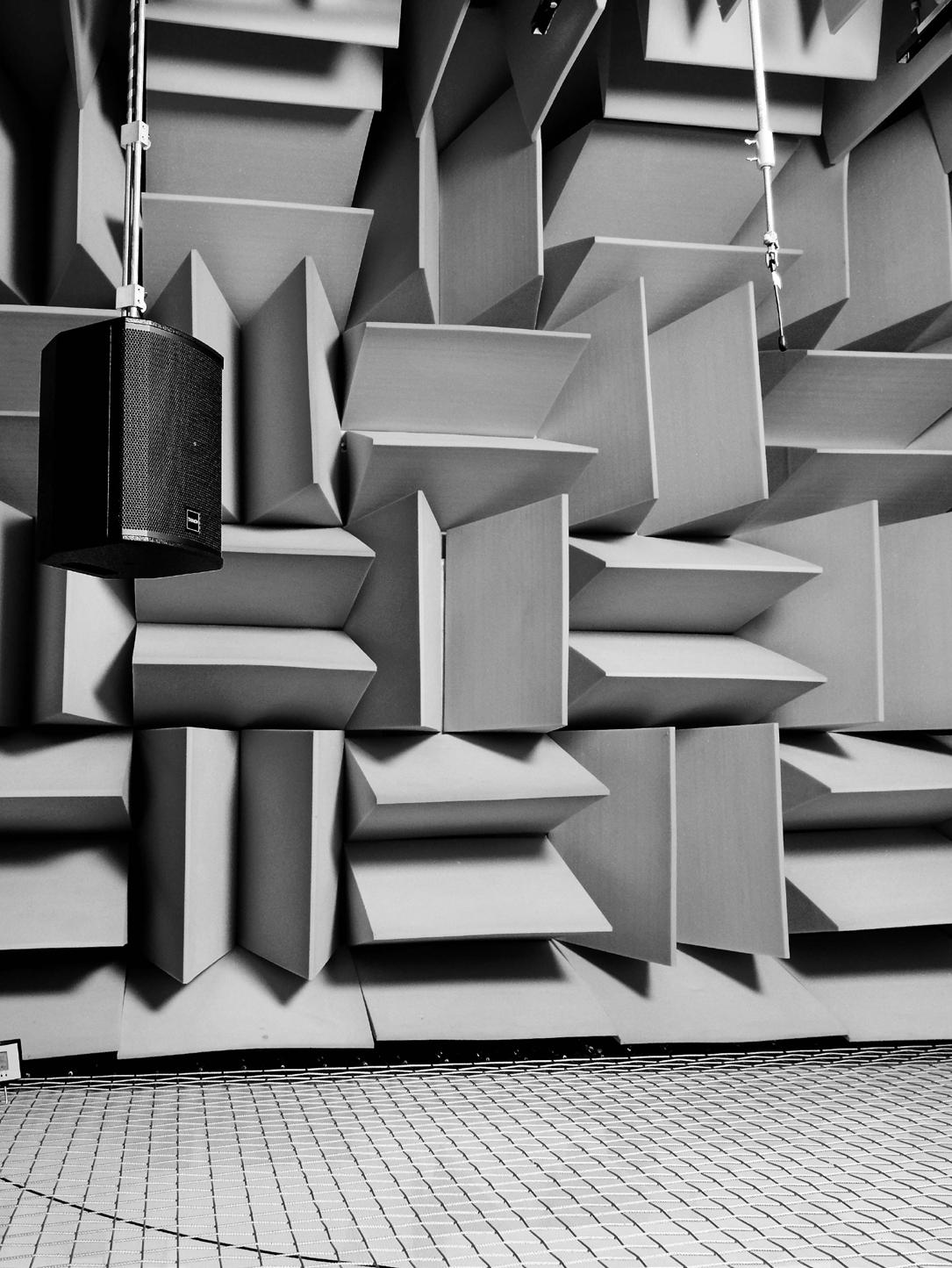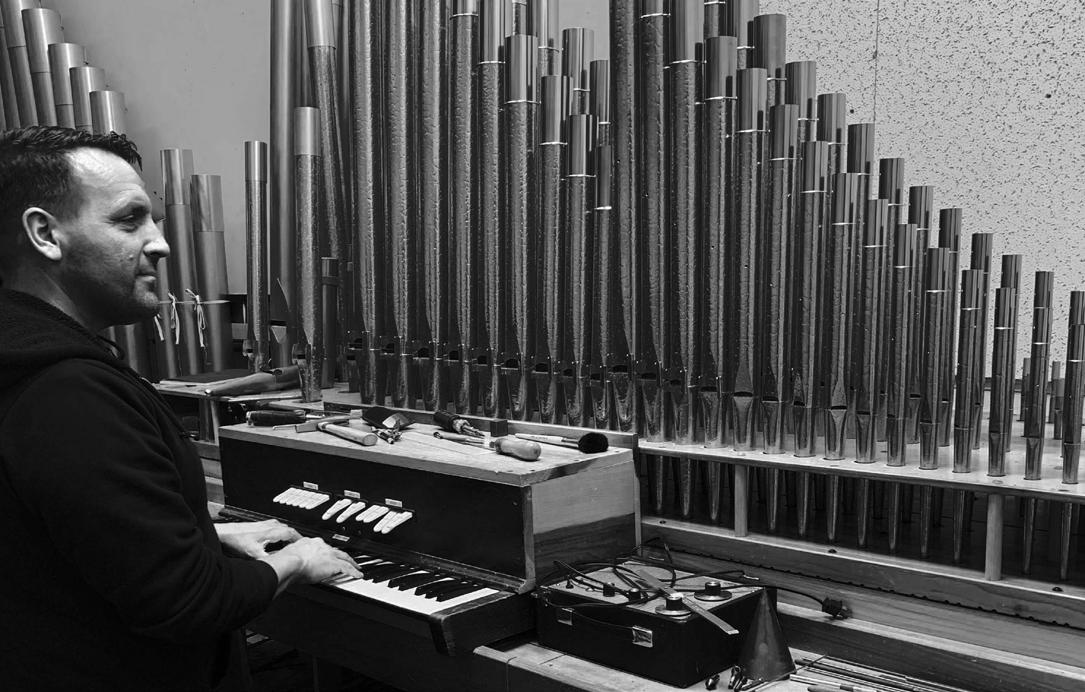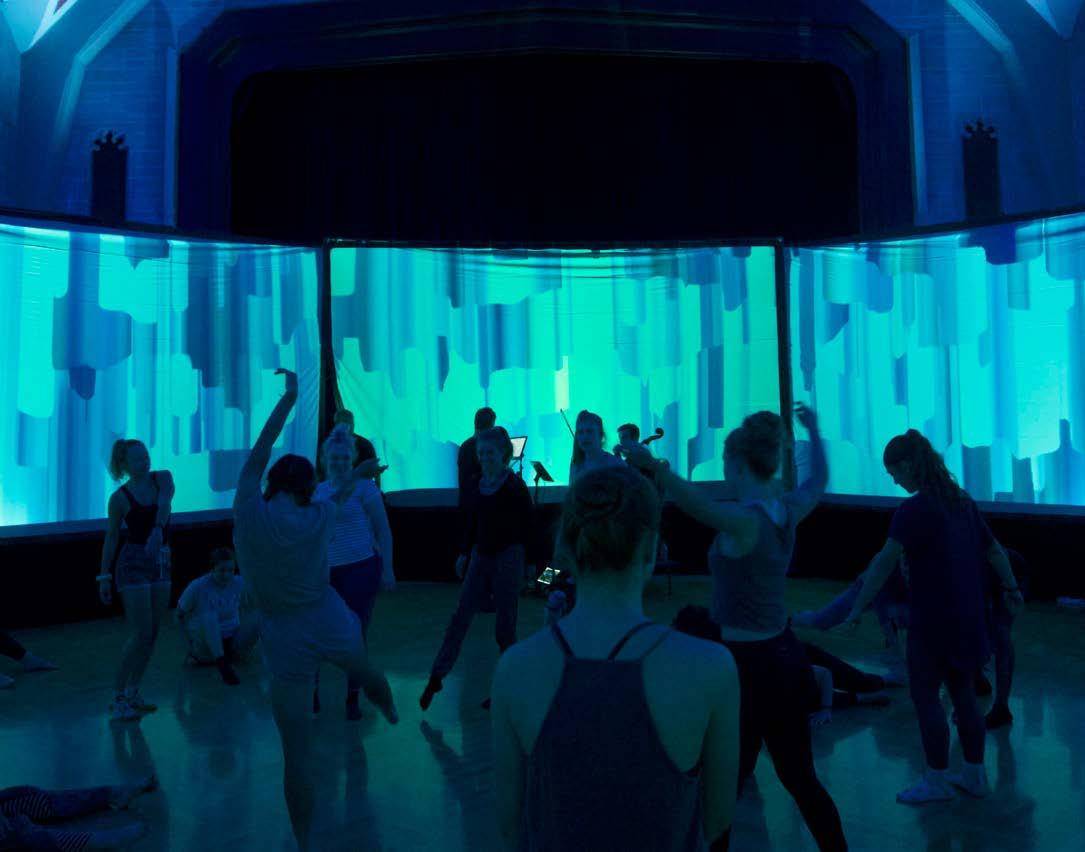
3 minute read
Good Sound
INDY ACOUSTIC RESEARCH MERGES ART AND SCIENCE TO HELP HEADPHONE MAKERS DESIGN A BETTER PRODUCT.
Words by Allison Troutner
Advertisement
Before Forbes called Indianapolis a “mini tech hub” in 2016, before Salesforce moved downtown or 16 Tech broke ground on their urban innovation district, four acoustics engineers were carving a path in tech innovation. On the north side of Indianapolis, in the back corner of a nondescript office building, resides Indy Acoustic Research (IAR), an acoustic performance consulting and engineering firm founded by four former MWM Acoustics/HARMAN International acoustics engineers.
An anechoic chamber with wedges that absorb sound waves, a paneled soundproof room, and a sound booth with a head-and-torso simulator are just a few of the resources that make the small IAR office look like a military-grade research lab. It’s one of the most expansive suites of acoustic technology in the state for testing acoustic performance.
“Very few consultants have an anechoic chamber and the capability to handle the range of products that we can because of our telecom history with Bell Labs,” says Marc Reese, IAR co-founder and acoustics design analyst. The devices they work with, however, aren’t the stuff of science fiction. Often, they are devices you use every day, like headphones, a growing $25.1 billion market.
New headphone features like active noise cancellation (ANC), Bluetooth®, or digital signal processing (DSP) allow listeners to immerse themselves in musical soundscapes, eliminate background noise and call mom hands-free. When brands like SteelSeries©, a gaming accessory company, bring a new headphone to market, they need a team that includes designers, mechanical, electrical and acoustic engineers, and software developers to consider advances in headphone technology.
Few businesses have the resources to house all these specialists full-time, so they turn to outsourced consultants like IAR to bridge gaps between design and engineering. Transducer design and integration are the bread and butter of IAR’s work. Transducers are how headphones and speakers convert electrical energy (audio signal) into mechanical wave energy (sound waves).
“Industrial designers sometimes use human factors and how people interact with the product, the colors, and how it should feel when you use it. But a lot of times they don’t look at the physics,” says Reese. “We do think that this is very heavy science, but we also have to step back and say this is part art.”
The science is in the magnets, coils, materials and air spaces within the headphone driver that converts energy; the art is in adjusting each element to achieve the highest quality sound while allowing industrial designers to maintain a creative design that attracts buyers.
“[We figure] out what we can control and how much we can twist each knob to get a design towards what [the client] wants,” says Reese. “Then we start tweaking those in a mechanical design as well, to get the simulation closer to where we want it.” The designs for circumaural (over the ear) headphones will have different mechanical requirements than pocket-sized, in-ear AirPods®, for example.
IAR’s work generates headphones that are comfortable, convenient and offer consistent quality and performance. “The expectation should be that you have good overall output level and balance,” says Reese. “Really good headphones should sound good with any type of content, whether you’re listening to music, video or podcasts.” And good headphones are about attention to detail, not cost. “It’s a knowledge of the acoustic airspace design and control around headphones. You can target a low-cost design and still make great-sounding headphones.”
The team’s favorite part of the process? Listening to the products once they’re finished, says Reese. “We always listen to whatever we create because the ear is such a fantastic instrument of engineering.” ■










